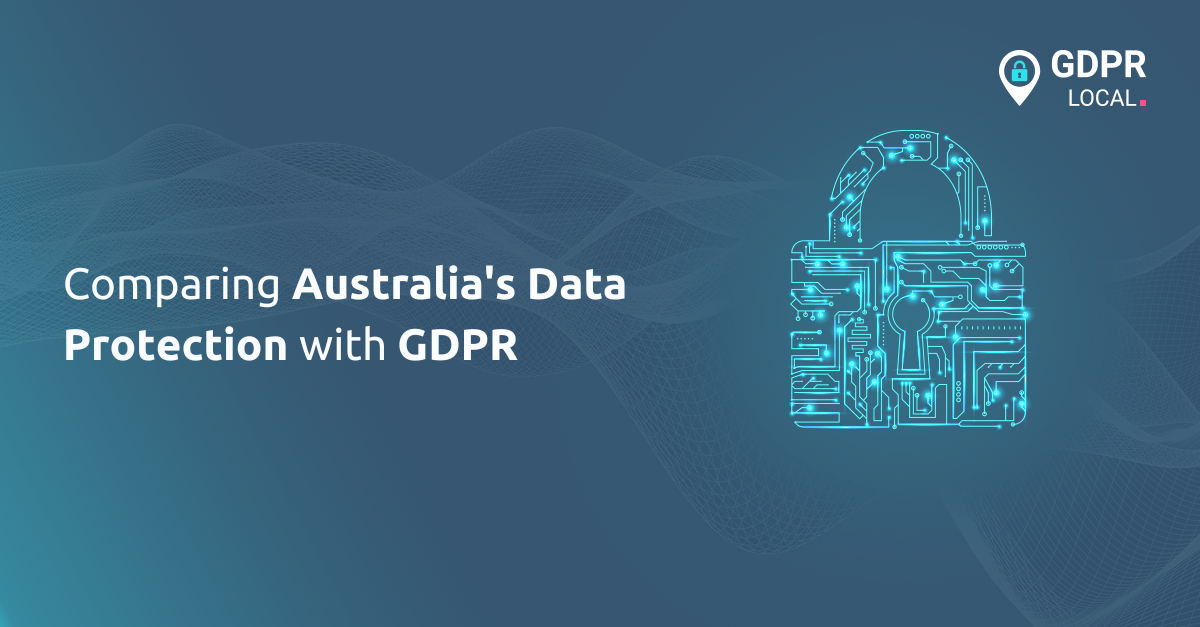
Comparing Australia’s Data Protection with GDPR
Updated: October 2025
As far as data protection is concerned, two juggernauts have emerged: Australia’s robust data protection laws and the European Union’s (EU) General Data Protection Regulation (GDPR). These frameworks shape how personal information is handled and shared, but how do they stack up against each other? We will embark on a comparative journey in this blog, examining Australia’s data protection laws against those under the GDPR.
Recent Developments
Australia’s privacy framework has undergone a significant transformation since 2024. The Privacy and Other Legislation Amendment Act 2024, which received royal assent in December 2024, introduced the first tranche of reforms, including a statutory tort for serious invasions of privacy (effective June 10, 2025), enhanced civil penalties reaching AU$50 million, and expanded regulatory powers for the Office of the Australian Information Commissioner.
A second tranche of reforms is anticipated imminently. This tranche is expected to introduce the much-anticipated ‘fair and reasonable’ test for data processing, expanded individual rights including data erasure and portability, and the removal of the small business exemption, which currently shields approximately 95% of Australian businesses from privacy obligations. However, as of October 2025, these reforms remain proposals that the government has agreed to ‘in principle’ and have not yet been enacted into law.
GDPR: A Game-Changing Data Protection Framework
The GDPR, introduced in 2018, revolutionised data protection in the EU. Its significance transcends borders, affecting any organisation that handles EU citizens’ data. Rooted in the right to privacy, the GDPR empowers individuals with control over their data, enforces stringent security measures, and imposes substantial fines for non-compliance.
Comparing Principles and Rights
Both Australian data protection laws and the GDPR champion fundamental principles such as transparency, purpose limitation, data minimisation, accuracy, and accountability. However, the GDPR offers individuals more comprehensive rights, including the right to erasure (the “right to be forgotten”) and the right to data portability, giving individuals greater control over their data.
The Extraterritorial Reach of GDPR
The GDPR extends its reach beyond EU borders, casting a wide net over any organisation that processes the data of EU citizens, regardless of location. This extraterritorial effect means that businesses in Australia must also comply with GDPR standards when handling EU citizens’ data, adding a layer of complexity to data compliance efforts.
Commonalities and Contrasts: A Closer Look
Consent: Both regulations emphasise obtaining clear and informed consent for data processing.
Breach Reporting: Both frameworks require organisations to report data breaches promptly.
Fines: While both impose substantial fines for non-compliance, GDPR fines can reach up to 4% of global revenue, whereas Australian fines are capped.
Data Transfers: GDPR imposes strict data transfer rules for non-EU countries, affecting international data flows.
Navigating Dual Compliance
For businesses operating in both Australia and the EU, ensuring compliance with both regulations is paramount. Here’s how to navigate this dual challenge:
Understand Applicability: Determine if your business processes data of EU citizens and assess your obligations under both regulations.
Mapping Data Flows: Identify where data flows between the two regions and assess whether they align with their respective regulations.
Tailor Policies: Develop policies that incorporate requirements from both frameworks, striking a harmonious balance.
Employee Training: Educate employees on both sets of regulations to ensure consistent adherence.
Collaboration: Foster collaboration between legal, IT, and compliance teams to navigate the complexities effectively.
EU Adequacy Status: Australia does not currently have an EU adequacy decision, meaning that transfers of personal data from the EU to Australia require additional safeguards such as Standard Contractual Clauses. If the second tranche incorporates GDPR-aligned reforms (particularly the removal of the small business exemption and introduction of stronger individual rights), Australia may be reassessed for adequacy status, which would significantly simplify cross-border data flows between the two regions.
Bridging the Data Protection Gulf
Australia’s data protection laws and the GDPR epitomise the global pursuit of privacy and data security. While they share common principles, their differences demand a nuanced approach to compliance. Businesses straddling these regulations must embrace a dual perspective, ensuring data protection that transcends borders. By navigating the intricate landscape with meticulous attention and a commitment to respecting individuals’ rights, businesses can bridge the data protection gap and engage in privacy wars with integrity.
We’re your trusted ally, dedicated to helping you achieve compliance within your company. Find the right advice or support simply by contacting us at [email protected].